TES 2013
7th Toronto Electroacoustic Symposium
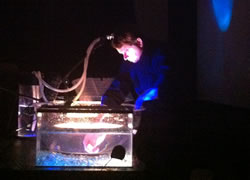
The seventh edition of TES brought together researchers and practitioners from diverse backgrounds to share and discuss their interrogations of the many diverse aspects of EA practices — from laptop orchestras to software development to interactive performance practices. TES 2013 co-presenters CEC and NAISA were pleased to welcome Francis Dhomont as keynote speaker.
Schedules, abstracts and programme notes from the symposium are available on the TES 2013 pages. Check out the TES 2013 Photo Album on the CEC’s Facebook page for some snapshots of the faces and events at the symposium.
About this issue
Editorial
Keynote Address

Abstraction et figuration dans ma musique… et autres considérations
The body of my musical production can be divided into two broad categories, one that I call abstract and the other figurative. By “abstract works” I refer to those works that have no other raison-d’être than the music itself, and have no metaphoric references. “Figurative works” are those which illustrate a poetic, philosophic or psychoanalytical theme, that make reference to the extra-musical concepts that have inspired them.
Articles
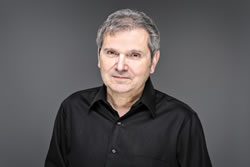
Mastering the Mutable: Music, technology and change
The author reflects on some of the challenges composers and performers may encounter when their creative work is based on quickly evolving electroacoustic technologies, rather than on the comfortable predictability of traditional acoustic instrumentation and related performance practices.

Interacting with Inner and Outer Sonic Complexity: From microsound to soundscape composition
The two extremes of the world of sound — the inner domain of microsound where frequency and time are interdependent, and the external world of sonic complexity, namely the soundscape — are discussed as they are intertwined in the author’s work.

From Sound to Score and Back: Approaches to composing with spectral data
The practice of composing music using spectral analyses of source sounds is examined by the author, first by discussing some of the inherent features of this technique, and then by demonstrating how these issues have influenced his own compositions.

Live and Non-Real-Time Source Separation Effects for Electroacoustic Music
Source separation algorithms for audio have many potential compositional applications in sound transformation. Two plugins implementing live source separation for SuperCollider are introduced, alongside two compositions involving those plugins and discussion of further compositional applications.

Lost in Transformation: Composer as translator
The author examines the concept of translation in music. Due to the temporal nature of the music medium, the author proposes that translation is a specialized, ontological branch of transformation for which there are multiple modes of translational production.

[Lecture-Recital] CrossTalk: A Reflection on the development of an interactive performance
CrossTalk explores the ways in which control affects relationships between performers, performers and their audience, and of the audience members amongst each other. Details about how this interactive musical performance developed over the course of three performances are discussed.

[Lecture-Recital] Hadronized Spectra (The LHC Sonifications): Sonification of proton collisions
Emergence and immersion, paradigm shifts and non-linearity, the Large Hadron Collider and proton collisions, sonification and music are among the foci of this article. Converting data to music for the sake of musical expression is the essence.

LANdini: A networking utility for wireless LAN-based laptop ensembles
Problems with OSC communication over wireless routers are among the reasons the authors developed LANdini, a networking utility for laptop ensemble performance. Existing networking models and the current structure of LANdini are explained, and data from tests is presented.

MyPic: A Tool for computer-assisted algorithmic composition
MyPic is a tool for computer-assisted algorithmic composition that provides the composer with an interface for describing and orchestrating musical events via envelopes and auxiliary data for the purpose of driving algorithmic processes.

Quince: A Modular approach to music editing
The main concepts and functionality of the quince, an editor for time-based data, are presented. The modular structure of the software allows the user to effortlessly add new functionality and offers a very flexible handling of data of various types.
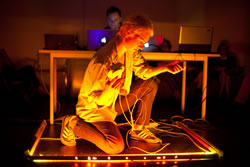
Affective Computing, Biofeedback and Psychophysiology as New Ways for Interactive Music Composition and Performance
Insight and an overview of the promising new practices of integrating human emotions in quantitative and practical ways into the fields of music composition and performance are presented. The techniques described rely on the fields of psychophysiology, biofeedback and affective computing.
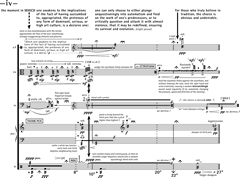
Miniature Form in Electroacoustic and (Instrumental) New Music: A typology supported by an audio gallery in order to establish a conclusive definition of “miniature form”
An overview of projects involving miniature form shows significant lack of consensus on the definition of what it actually “is”. A typology is proposed that takes into account compositional and musical intent — rather than duration — as being principal determinant factors in miniature form.
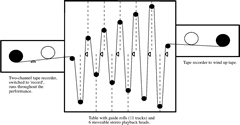
Structure Formation: An Analysis of electronic superimpositions in Stockhausen’s “Solo”
An analysis of electronic superimpositions in Karlheinz Stockhausen's work Solo for Melody Instrument with Feedback, in which the composer employs a variable-length tape delay and feedback system to record and play back the material of the soloist live.

Analysis of Christian Calon’s “The Standing Man”
The Standing Man is loyal to acousmatic characteristics in musical composition while expanding the dimensions of musical expression by designing the musical space. A descriptive analysis of Christian Calon’s work focuses on spatialization as the most important compositional tool.
Other Items
SONUS.ca
Works by some authors and / or artists in this issue can be heard in SONUS.ca, the CEC’s online electroacoustic jukebox:
- Javier Álvarez
- Wendy Atkinson
- Egils Bebris
- Till Bovermann (a.k.a. LFSaw)
- jef chippewa
- Stuart Cunningham
- Francis Dhomont
- Bernhard Gál
- Gilles Gobeil
- Alexander Grebtschenko
- Steve Heimbecker
- Panayiotis Kokoras
- Hugh Le Caine
- Andrew P. Lewis
- Jascha Narveson
- Michael Palumbo
- Émilie Payeur
- Barry D. Truax
- Nathaniel Virgo
Social top